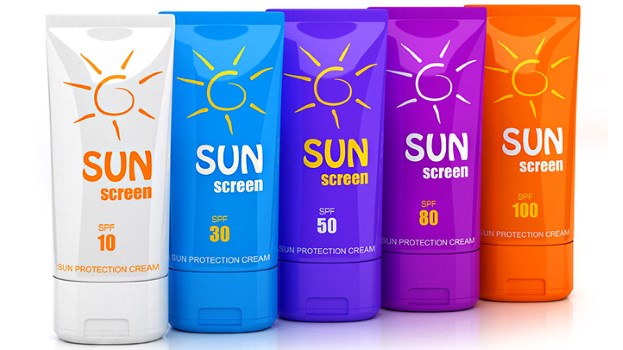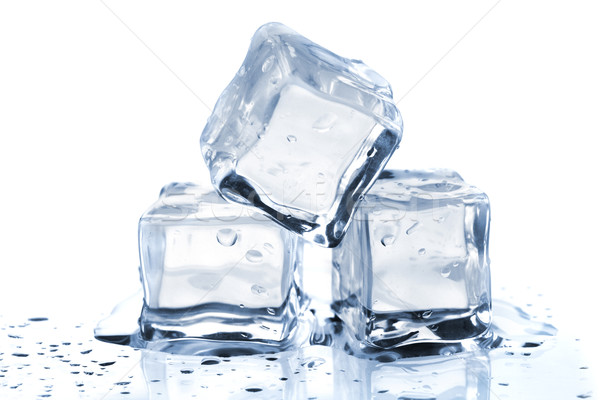Why does ice cream look different when it melts in your car and gets refrozen?
If you have ever made homemade ice cream, you may have noticed that it takes a lot of work. My family’s ice cream maker looked a lot like this one which was electric but needed a little more monitoring than the ones we have today.

The key to some good ice cream is keeping it at the perfect temperature and keeping it moving. Commercial creameries have special machines that continually stirs the ice cream while it is being frozen. These machines cool the ice cream much more quickly than my home machine ever could, which is why their ice cream is much creamier. It prevents larger ice crystals from freezing in the ice cream.
When ice cream melts in the Houston heat on your way home from the grocery store, you may notice that it’s not quite the same consistency any more. If you put the ice cream back into the freezer, it will refreeze, but over a longer period of time than the original ice cream. In addition when you re-freeze the ice cream, you aren’t churning the mixture. This allows larger crystals to form which affects its appearance and its creamy consistency. It is not recommended to refreeze ice cream that has been left out for a longer period of time. Ice cream is made out of dairy, so it can grow bacteria or spoil if left out for too long!

How does sunscreen actually work?
First, we have to talk about what happens to cause your skin to burn. When you are out in the sun, your skin is exposed to sunlight which is made from ultraviolet (UV) radiation. Ultraviolet radiation can be subdivided into three categories based on wavelength. UV-A radiation has the longest wavelength. It is not absorbed by our atmosphere’s ozone layer and it is the type of UV that is responsible for long term skin damage. UV-B radiation has a shorter wavelength than UV-A. Some of the UV-B radiation is absorbed by the ozone layer and the remaining UV-B radiation that reaches the earth’s surface is responsible for sunburns. The last type of UV radiation is UV-C radiation. It has the shortest wavelength and it is completely absorbed by our atmosphere. On the Earth’s surface, we are not affected by UV-C radiation, but it could be an issue for astronauts if they didn’t have those protective suits. Sunscreen protects our skin from the two most common forms of UV radiation on the earth’s surface – UV-A and UV-B.
Essentially, sunscreen forms a thin, invisible protective layer on the surface of our skin. It uses organic and inorganic active ingredients to form that protective layer. The organic ingredients such as octyl methoxycinnamate and oxybenzone absorb UV rays. When the rays are absorbed, the energy is harmlessly dissipated in the form of heat. Some of the organic materials in sunscreen will slowly break down over time, which is why we need to reapply sunscreen regularly. The inorganic active ingredients like zinc oxide or titanium dioxide reflect the UV radiation essentially preventing the UV radiation from hitting the skin. Early versions of sunscreen were opaque and white, which reflected the UV radiation well. However, it wasn’t the most appealing look for the beach. With newer technology, they’ve made these inorganic materials much smaller and nearly invisible.

How can I cool down a warm beverage quickly?
It’s the middle of summer, and when you walk outside it feels like you have walked through a curtain of heat and humidity. Nothing sounds better in a Houston summer than a nice, cold drink. But we’ve all forgotten to move something from the pantry to the fridge, and ended up with a warm drink instead. Even when you move that drink to the fridge, it can take over 45 minutes to reach the cool temperature you’d prefer. Here are a few ways to cool down your beverage quickly, and the science on how it works.
Option 1: The Wet Paper Towel Method.
Wrap your bottle or can in a wet paper towel and place in the fridge. The drink will cool down much faster with the wet paper towel because of how heat is transferred. Normally, heat will transfer from a higher temperature object to a lower temperature object. In the case of the drink in the fridge, the heat will transfer from the soda can (higher temperature) to the air in the fridge (lower temperature). Heat can be more easily transferred through a solid like the soda can because the atoms are closer together on average. It is much more difficult with a gas like the air in the fridge because the atoms are more spread out on average. When we put a wet paper towel onto the outside of the can, we are using a liquid to facilitate the transfer of heat more easily than with air. Water from the towel will evaporate from the towel and the remaining water will be cooler. This process is called evaporative cooling. The wet towel also conducts the heat from the can cooling the soda to the temperature you prefer.
Option 2: The Salt & Ice Water Method.
Fill a bowl with ice and water, then pour salt over the icy mixture. Place the can or bottle in the bowl, and stir. It should be colder in about 5 minutes. The reason that this method works so well is trifold. First, you are lowering the melting point of the ice when you add salt so the mixture will be colder than 32° F. Basically as the ice is melting, it is using up a little bit of energy to break bonds causing the remaining water to be colder. Having a colder liquid helps the heat transfer between the liquid and the soda can. Which brings me to the second reason that it cools quickly – it’s a liquid! As we mentioned in option 1, heat can be transferred more easily through water than through air, so the water is facilitating the heat transfer. Lastly, stirring the bottle or can around in the mixture can reduce the amount of time needed to cool down the soda. If you did not stir the mixture, then the can would slowly transfer heat to the liquid surrounding it making the liquid immediately surrounding it warmer. The transfer of heat would continue slowly until both the can and the liquid reach equilibrium. By stirring the mixture, you are exposing the can to more of the cold water which speeds up the transfer of heat. In both situations, the can and liquid are reaching equilibrium, but over different amounts of time.
With either cooling option, you will get a nice cold beverage quickly and now you know the science behind it!






